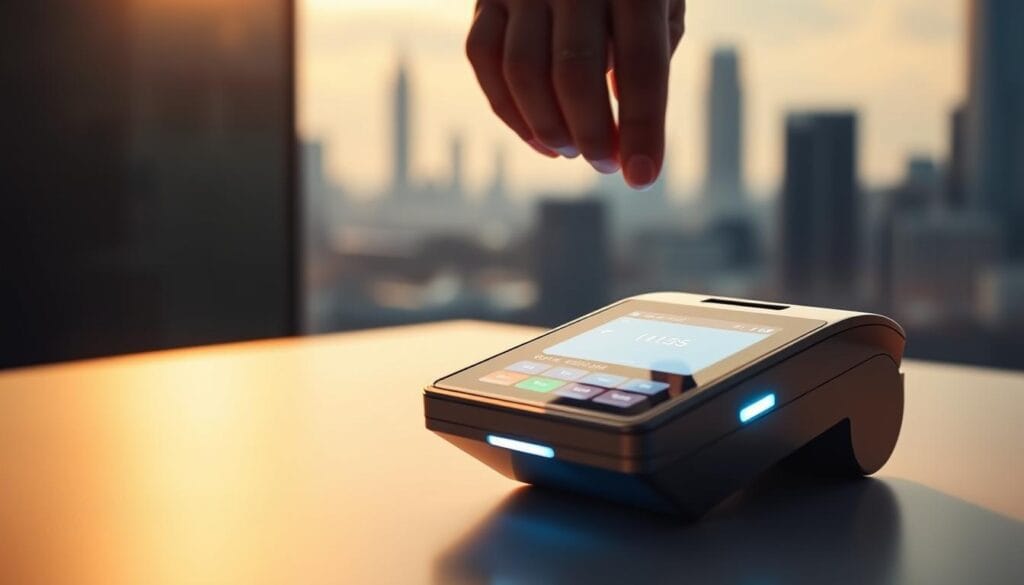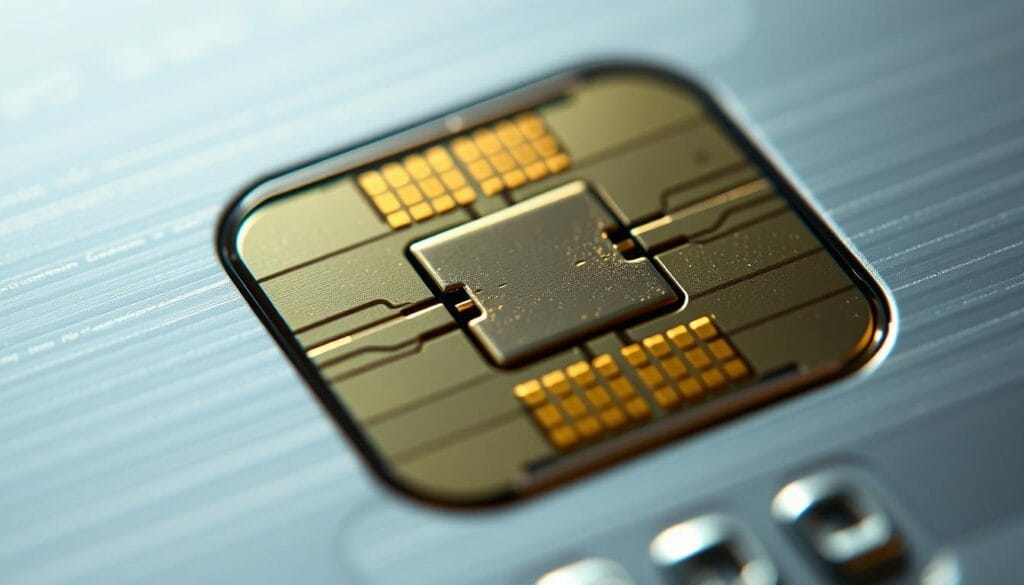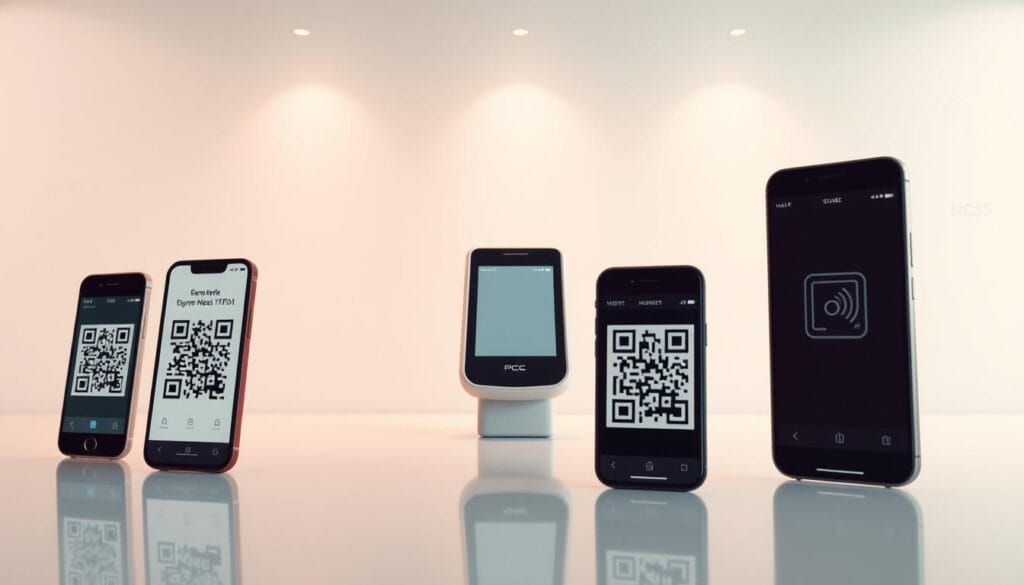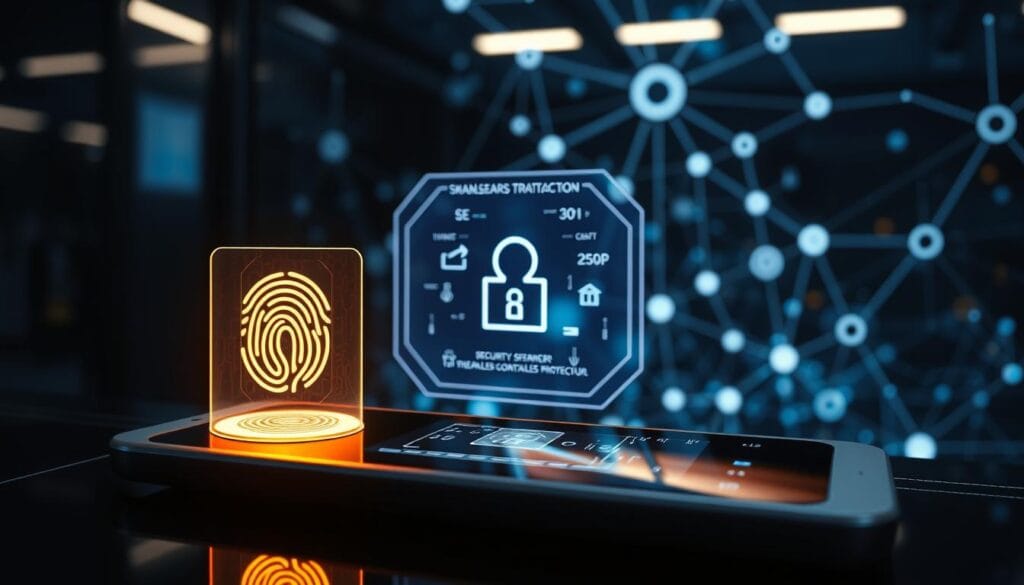Did you know that over 70% of U.S. consumers now prefer using faster, more secure methods for their everyday purchases? This shift began gaining momentum in 2019 when Chase introduced its Visa credit cards, followed by debit cards later that year. This marked a turning point in the adoption of modern transaction methods across the country.
Today, these methods have expanded beyond traditional cards. Wearables like smartwatches and even innovative devices like Visa’s NFC-enabled payment rings, first showcased at the 2016 Rio Olympics, are becoming increasingly popular. These advancements are not just about convenience; they also offer enhanced security through features like one-time transaction codes and EMV chip parity.
As we look ahead to 2025, the growth of these solutions is undeniable. With faster checkout experiences and reduced physical interaction, they are reshaping how we handle transactions. The future is here, and it’s faster, safer, and more efficient than ever before.
Key Takeaways
- Chase’s 2019 rollout accelerated the adoption of modern transaction methods in the U.S.
- Wearables and mobile devices are expanding the scope of these solutions.
- Visa’s NFC-enabled payment rings showcased innovative possibilities in 2016.
- Enhanced security features like one-time codes ensure safer transactions.
- By 2025, these methods are expected to dominate the transaction landscape.
What Are Contactless Payment Technologies?

Tap-and-go methods are transforming the way we handle everyday purchases. These systems allow users to complete transactions in under two seconds, often for amounts under $200, which is the standard limit in the U.S. This speed and simplicity make them a favorite among consumers and businesses alike.
The Basics of Tap-and-Go Transactions
At the core of tap-and-go systems is near field communication (NFC), a specialized subset of RFID technology. NFC operates at 13.56 MHz and requires devices to be within 4 cm of each other to communicate securely. This short range ensures that transactions are both fast and secure.
Unlike traditional RFID, which can communicate over distances of 1 meter or more, NFC’s limited range minimizes the risk of unauthorized access. This makes it ideal for tap pay systems, where security and speed are paramount.
Key Components: NFC and RFID
NFC and RFID are the backbone of modern transaction methods. NFC is specifically designed for secure, short-range communication, adhering to the ISO/IEC 14443 standard. This ensures that data is encrypted and protected during every transaction.
Devices like credit cards, smartphones, wearables, and even stickers can be equipped with NFC technology. For example, Visa’s payment rings, introduced in 2016, use the same NFC technology found in contactless cards. This versatility allows users to choose the form factor that best suits their needs.
For those interested in managing their finances more effectively, consider exploring AI-powered apps that complement these modern transaction methods.
How Contactless Payment Technologies Work

Behind every seamless transaction lies a complex yet secure process. These systems rely on advanced technologies to ensure speed, safety, and reliability for users. From initiation to approval, every step is designed to protect customer data while delivering a smooth experience.
The Role of EMV Chips in Secure Transactions
At the heart of these systems is the EMV chip, a small but powerful component that enhances security. Unlike traditional magnetic stripes, EMV chips generate a unique dynamic cryptogram for every transaction. This ensures that even if the data is intercepted, it cannot be reused.
EMV chips are now globally prevalent, with 86% of cards equipped with this technology as of 2022. This widespread adoption highlights their effectiveness in reducing fraud and improving trust in modern transaction methods.
Step-by-Step Process of a Contactless Payment
The process begins when a user taps their device or card on a terminal. The terminal initiates the transaction, encrypting the data and routing it through the network. The issuer then verifies the details and generates a one-time code for approval.
Tokenization plays a crucial role here. Instead of transmitting actual card numbers, the system uses disposable tokens. This adds an extra layer of security, making it nearly impossible for hackers to access sensitive information.
Case studies, such as MONEI’s adoption of Bizum, show a 17% increase in usage due to these streamlined processes. Additionally, the entire process takes less than 500 milliseconds, ensuring minimal latency and a seamless experience for users.
For those interested in exploring related technologies, check out this guide on understanding blockchain technology, which complements these advancements.
Types of Contactless Payment Methods

From smartphones to wearables, the options for seamless transactions are expanding rapidly. These tools offer speed, convenience, and enhanced security, making them a popular choice for consumers and businesses alike.
Mobile Wallets and QR Codes
Mobile wallets like Apple Pay and Google Pay have gained significant traction. In 2023, 58% of U.S. smartphone users utilized these tools for their everyday purchases. Unlike digital wallets, which are online-only, mobile wallets allow users to make in-store transactions using their smartphones.
QR codes are another innovative payment method. They eliminate the need for NFC hardware, reducing costs for merchants. This makes them an attractive option for small businesses and emerging markets. For example, Bizum processed €23 billion via 23 million users in Spain in 2022.
Wearables and Contactless Cards
Wearables, such as smartwatches and payment-enabled rings, are becoming increasingly popular. The market for these devices is growing at a 30% CAGR, driven by their convenience and versatility. They offer the same security features as traditional cards but in a more portable form.
Contactless cards remain a staple in many regions. In the U.S., the transaction limit is $200, while in the EU and UK, it’s €50 and £100, respectively. These limits ensure both convenience and security for users.
For those looking to maximize their financial tools, explore the best cashback and rewards apps of to complement these modern solutions.
Security Measures in Contactless Payments

Security is a top priority in modern transaction systems. With the rise of digital solutions, protecting user information has become essential. Advanced measures like one-time codes and velocity checks ensure safe and reliable processes.
One-Time Codes and Fraud Prevention
One-time codes are a cornerstone of fraud prevention. These cryptographic unique codes are generated for every transaction, making them impossible to reuse. Visa reports a fraud rate of just 0.02% for these systems, compared to 0.08% for traditional methods.
Velocity checks add another layer of security. They block multiple rapid taps, preventing unauthorized use. EMVCo’s liability shift policy also encourages merchants to adopt secure systems, reducing risks for cardholders.
Debunking Common Security Myths
Many believe that skimming is a significant threat. However, modern systems do not transmit readable names or PINs. Additionally, transaction counts are limited, further reducing risks.
Encryption protocols like 128-bit AES and TLS 1.3 ensure data is protected during transmission. The EU’s €50 floor limit also requires periodic PIN entry, adding an extra layer of verification.
Visa’s zero liability policy ensures that cardholders are not held responsible for unauthorized transactions.
For those looking to enhance their financial security, consider exploring automated savings apps to complement these advanced measures.
Benefits of Adopting Contactless Payments

The shift toward faster and more efficient transaction methods is reshaping the way consumers and businesses interact. These systems offer significant advantages, from reducing checkout times to enhancing customer experiences. As adoption grows, both users and merchants are reaping the rewards.
Speed and Convenience for Consumers
One of the most notable benefits is the speed of these systems. According to NMI, checkout times are 32% faster compared to cash transactions. A typical cash transaction takes around 15 seconds, while tap-and-go methods complete in just 2 seconds. This efficiency is particularly valuable in high-traffic environments like grocery stores, where 85% of transactions are now contactless.
Frictionless checkouts also encourage impulse purchases. Visa’s research shows an 18% increase in basket size when these methods are used. This convenience not only improves the shopping experience but also drives higher sales for businesses.
Increased Sales and Customer Satisfaction for Merchants
For merchants, adopting these systems can lead to significant operational benefits. Reduced cash handling and faster reconciliation processes save time and resources. MONEI’s hospitality case study highlights a 23% boost in repeat customers after implementation.
These methods also enhance accessibility, particularly for mobility-impaired users. The ease of use and minimal physical interaction make them a preferred choice for many. During the COVID-19 pandemic, adoption surged by 56%, driven by hygiene concerns.
As Forbes reports, digital wallets are expected to account for over half of U.S. e-commerce by 2025. This trend underscores the growing importance of these systems in the modern business landscape.
How to Start Using Contactless Payments
Adopting modern transaction systems begins with selecting the right tools and strategies. Whether you’re a small business or a large enterprise, the right setup can streamline operations and enhance customer experiences. From choosing the right payment terminal to integrating seamless solutions, every step matters.
Choosing the Right Payment Terminal
Selecting the appropriate terminal is crucial for smooth operations. There are three main types: countertop, mobile, and modular. Countertop terminals are ideal for fixed locations, while mobile options offer flexibility for on-the-go businesses. Modular terminals are customizable, catering to specific needs.
Certifications like PCI PTS 6.x, EMV L2, and NFC Forum compliance ensure security and compatibility. These standards protect sensitive credit data and ensure seamless transactions. For example, NMI’s gateway supports over 200 POS integrations, making it a versatile choice for businesses.
Integrating Contactless Solutions for Your Business
Integration involves several steps, starting with terminal procurement. Once the hardware is in place, setting up a gateway is essential for processing transactions. Staff training ensures smooth adoption and minimizes errors during the transition.
For businesses with custom POS systems, API integration offers flexibility. Auto-update features ensure terminals stay compliant with future protocols, reducing maintenance costs. The average terminal cost is $1,200, but the potential 23% sales lift makes it a worthwhile investment.
For more insights on optimizing financial tools, explore AI in credit risk assessment to enhance your business strategies.
The Future of Contactless Payment Technologies
By 2025, the way we interact with money will look vastly different. ABI Research forecasts that over 5 billion users worldwide will adopt these systems, driven by convenience and security. This shift is not just about speed; it’s about redefining how transactions integrate into our daily lives.
Global Adoption Trends
Adoption rates vary across regions. In the UK, 78% of consumers use these systems, compared to 51% in the U.S. as of 2023. This disparity highlights the influence of infrastructure and consumer behavior. Emerging markets are also catching up, with CBDC integrations paving the way for seamless adoption.
Vehicle commerce is another growing trend. GM’s Marketplace enables in-car purchases, blending convenience with mobility. This innovation shows how systems are expanding beyond traditional devices, integrating into everyday objects.
Innovations on the Horizon
Biometric authentication is set to revolutionize security. Visa’s prototype for fingerprint-enabled cards eliminates the need for PINs, enhancing user experience while maintaining safety. This technology is expected to become mainstream by 2025.
The Internet of Things (IoT) is also transforming transactions. Smart appliances with auto-replenishment capabilities are becoming a reality. Imagine your fridge ordering groceries when supplies run low—this is the future of commerce.
Sustainability is another focus. Recyclable NFC tags are emerging as an eco-friendly alternative to plastic cards. This shift aligns with global efforts to reduce waste and promote greener solutions.
For those interested in the broader financial landscape, explore the top cryptocurrencies to invest in 2025 for insights into complementary technologies.
Conclusion
The evolution of transaction methods is reshaping how businesses and consumers interact. By 2025, over 80% of POS terminals are projected to support these systems, driven by customer demand and the need for fraud reduction. For small and medium businesses, adopting these solutions early can provide a competitive edge.
Standardization efforts by organizations like EMVCo and the NFC Forum ensure compatibility and security across platforms. These advancements are not just about speed but also about creating a seamless and secure experience for users.
As one analyst noted, these systems are becoming the “new cash standard”, reflecting their growing dominance in the financial landscape. To stay ahead, businesses should explore future trends and consider integrating these solutions into their operations.

